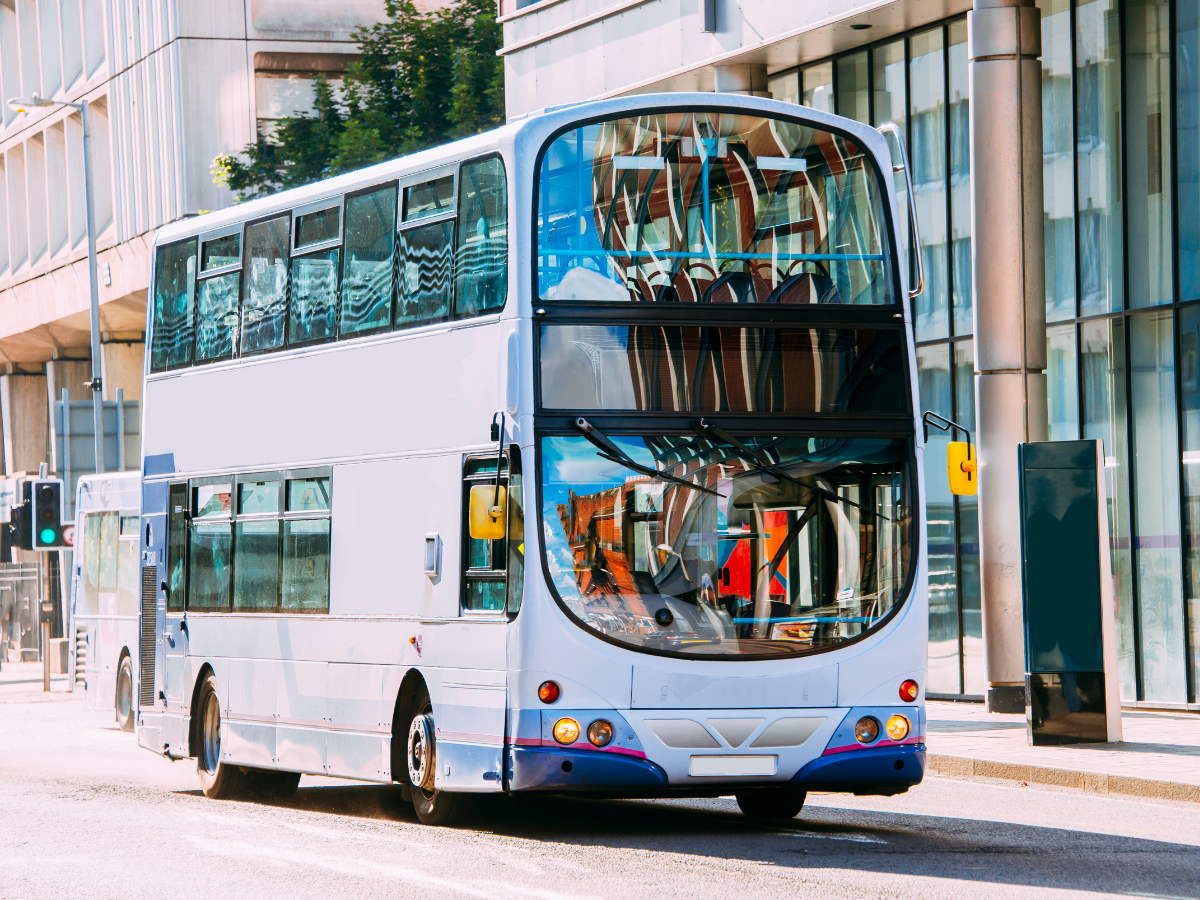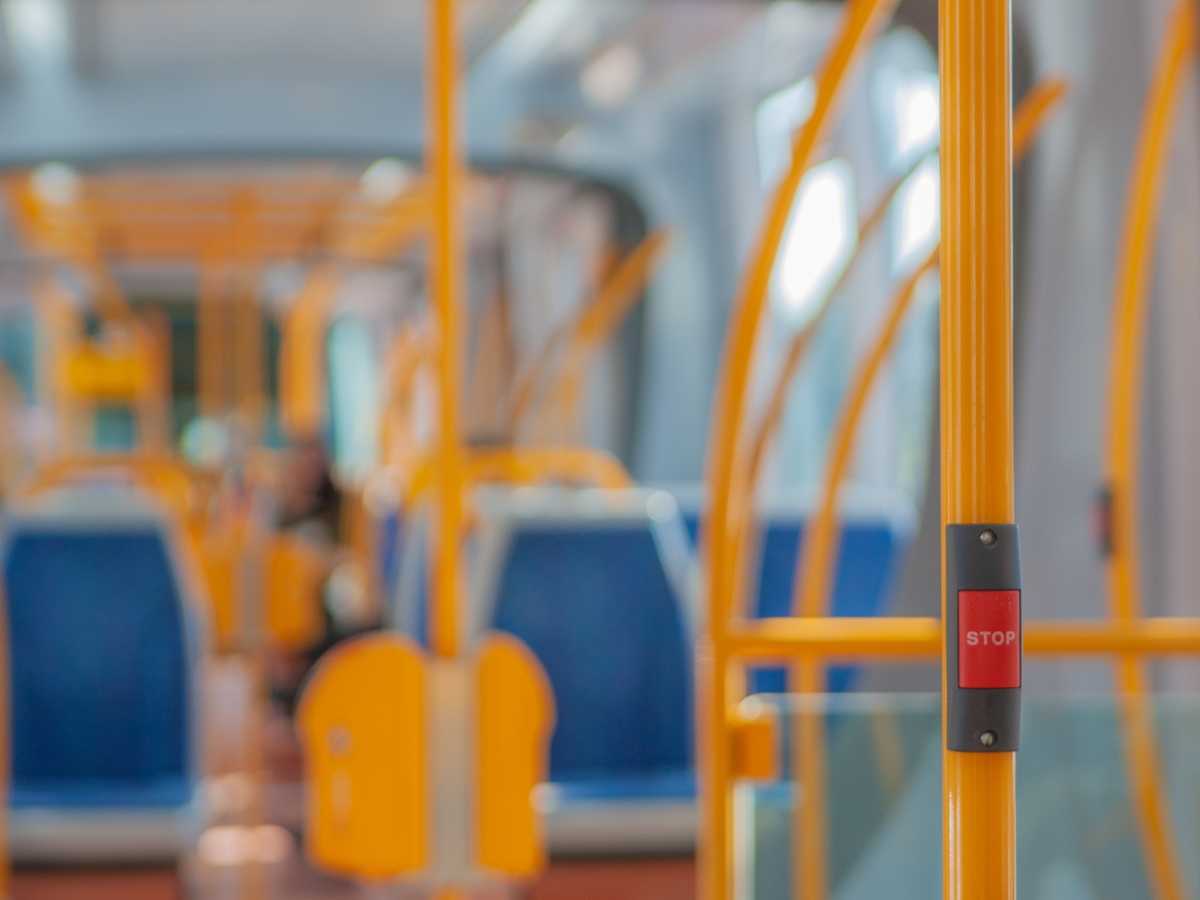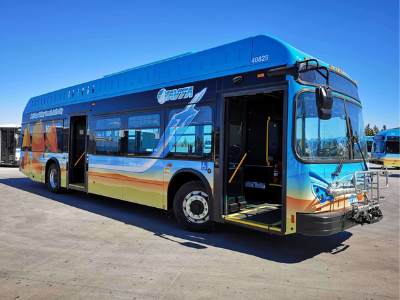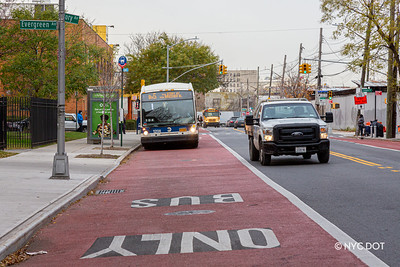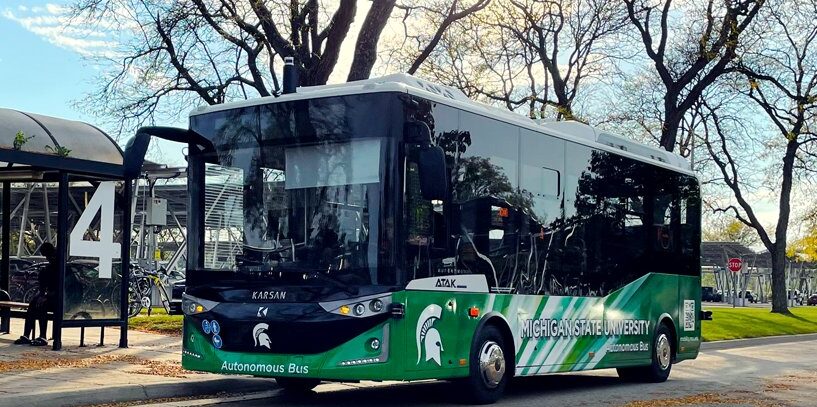San Diego’s Bus on Shoulder pilot project has hit a major milestone with training commencing on the I-805 and SR 94 freeway shoulders between National City and Downtown San Diego.
The pilot project is a joint effort between SANDAG, MTS, and Caltrans, in partnership with the California Highway Patrol (CHP), to improve reliability and maintain travel times for the South Bay Rapid transit service by using select shoulders on the two freeways to bypass vehicle congestion during peak travel times.
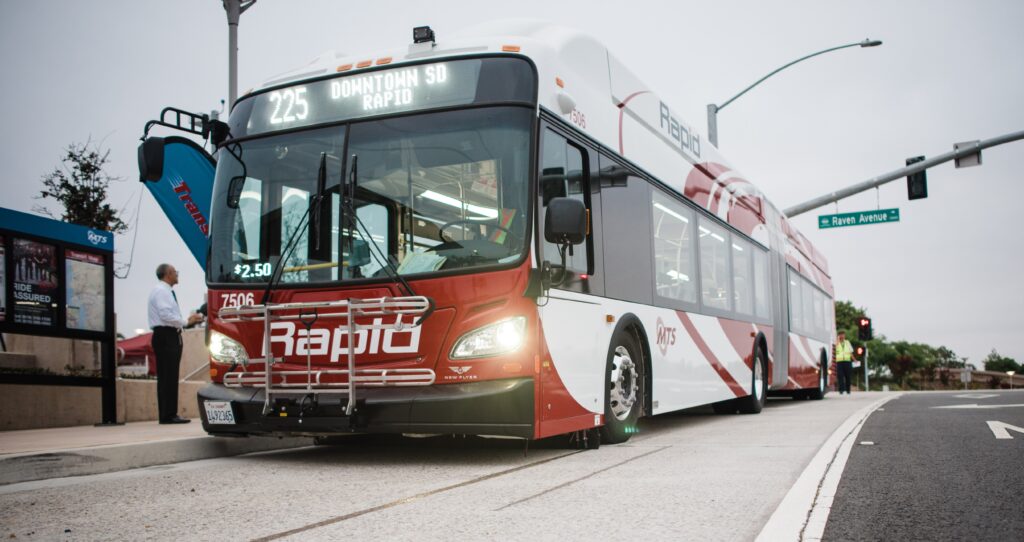
MTS bus operators on Route 225 will complete on-the-road training in December and January, with operations for the three-year Bus on Shoulder project expected to begin in late January or early February. CHP will escort each bus during training, which is scheduled to take place Monday through Friday, between 6:30 – 8:30 a.m. People driving on the freeway should remain alert, observe traffic safety laws and posted signage, and never follow the bus into the shoulder.
The pilot project includes the San Diego region’s first use of vehicle-to-infrastructure technology that allows buses to communicate with ramp meters. South Bay Rapid buses are equipped with innovative driver assistance technology, including sensors that monitor the lanes and provide audio and visual alerts to the bus drivers to help avoid potential conflicts. With safety as a top priority, buses will only enter the freeway shoulder when travel lanes operate under 35mph and will travel at a maximum speed of 35 mph on the shoulders. The shoulders will always be available for law enforcement, emergencies, and incident management.
The Bus on Shoulder project will allow SANDAG, MTS, and Caltrans to document on-time performance data, travel speeds, connected vehicle (vehicle-to-infrastructure) and driver assistance technology use, enforcement issues, and rider and driver perceptions of the service to help inform future projects.
The project aligns closely with California’s innovation and environmental priorities, and the SANDAG 2021 Regional Plan, which will modernise the region’s transportation system, giving people real transportation options that are accessible to everyone, safer, and more sustainable.
SANDAG and Caltrans crews completed construction on I-805 and SR 94 in summer 2021. Work included modifications to freeway ramps and shoulders, and the installation of connected vehicle technology at ramps and interchanges. Crews also repaved sections of the shoulders and added striping and new signage along the route on I-805 and SR 94.
This article was originally published by Metropolitan Transit System.









